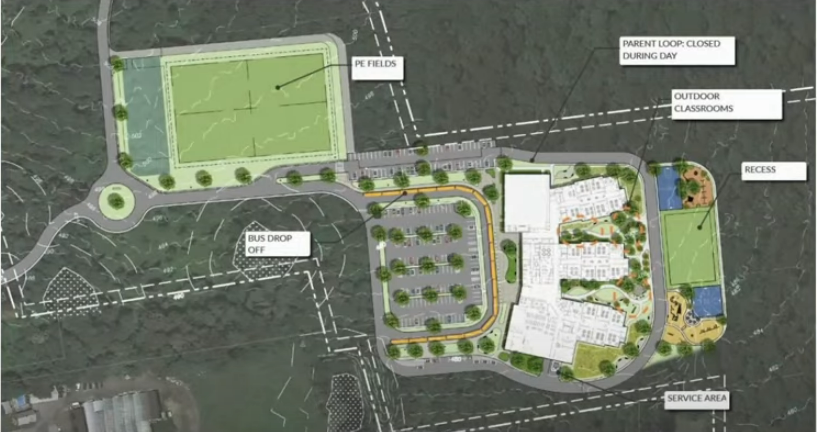In what was described as one of its most significant decisions, the Elementary School Building Committee on Tuesday voted to select an electric ground source heat pump system for the proposed Elmwood School replacement project.
It took discussion about both fiscal and environmental considerations to ultimately come to a decision.
“It’s our job to look for opportunities to be as responsible as possible — balancing our energy and environmental responsibilities with our fiscal responsibilities,” said ESBC chair Jon Graziano.
He noted that Town Meeting voters are looking at an approximately $170 million project, and the board must seek ways to cut costs without compromising programming and efficiency.
The ground source heat pump (GSHP) option has an estimated “first cost/net zero ready” price tag of $17.7 million, which comprises about 10 percent of the overall school project’s cost.
It involves an energy use intensity (EUI) of 25, projected Mass Save incentives subtracting $2.1 million, and possible maximum benefits of Inflation Reduction Act (IRA) bringing costs down by $7.1 million. Its 30-year life cycle cost with Mass Save incentives included totals $39.9 million.
That option compared with an air source heat pump (ASHP) system having 75 percent geothermal, an EUI of 31, first cost of $15.3 million, projected incentives of about $1.4 million for Mass Save and about $4.6 million for IRA, and 30-year life cycle costs of $42.8 million.
Members discussed paying more money upfront for net zero efficiency, receiving higher incentives and a lower life cycle cost versus starting out paying less with less than net zero, getting a lower amount of incentives and paying more over 30 years.
“HVAC [heating, ventilation, air conditioning] is one of the biggest decisions you have to make,” said Jeff D’Amico, project director of Vertex. “It not only drives mechanicals but also electrical costs. Mechanical is intertwined with the electrification of the building.”
D’Amico said low EUI buildings result in having more expensive “envelopes,” because they require thicker insulation, more walls, taller infrastructure, more insulated roofs, etc.
“Low EUI, net zero sustainability have repercussions,” he said. “These are the realities.”
Jess Farber, vice president and managing partner of CMTA Consulting Partners, noted that there is an ability to shift away from 100 percent geothermal to include the air source pumps later on.
It is with the expectation of lower Mass Save funds and IRA incentives. He said it is not clear how the Massachusetts School Building Authority (MSBA) disburses those funds likely in the third year. Specifics about the IRA money, although possibly “a windfall,” Farber said, also would be forthcoming.
ESBC member Bill Flannery, representing the Appropriations Committee, said that he appreciated that the initial costs were spelled out without including the incentives to give a truer picture.
He asked, “Where can we find millions to knock this cost down?” referring to the overall school project. Flannery added costs for town projects keep rising even from month to month.
D’Amico noted the board had completed other major decisions such as grade configuration, location and the size of the building. Next to do after HVAC is choosing either a general contractor or construction manager at risk delivery.
Beyond that, choices about building façade materials, finishes, furnishings and the like would impact the project’s cost.
Earlier, Chris Eberly, senior project manager at Vertex, talked about getting more accurate sizing of the well field, projected to have 170 wells, a number that could decrease with drilling, testing and analysis.
The test well would serve as the first well of the project, he said. However, D’Amico noted the project is short of money left from feasibility study funds to cover the approximately $53,000 cost as well as other tasks still to be done.
Before the next meeting on May 23, members are hoping to identify funding sources to get the well testing done. Drilling and testing should take a few days, and an additional two weeks is needed for a final report, according to Vertex officials.



















0 Comments